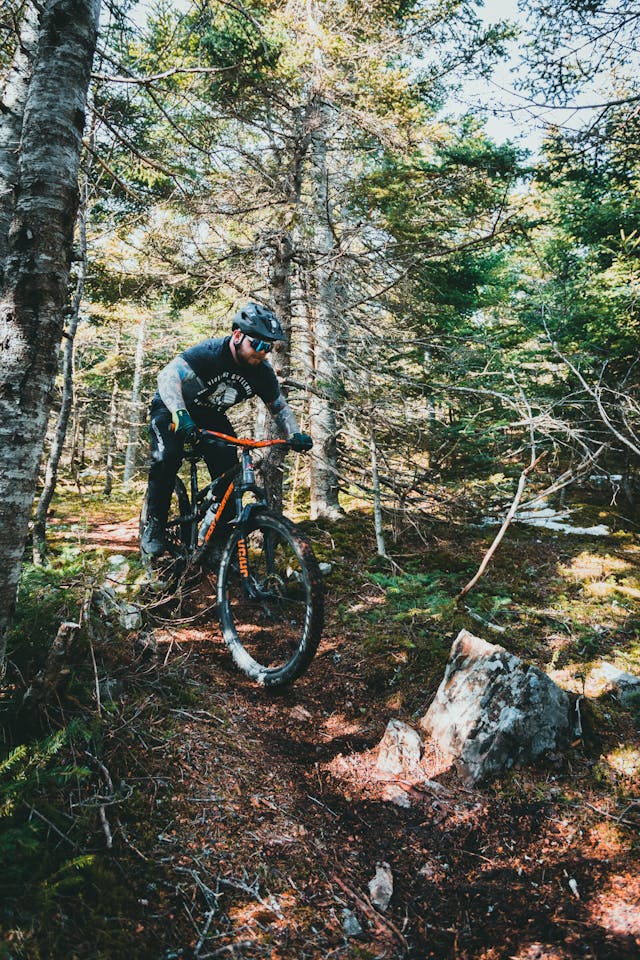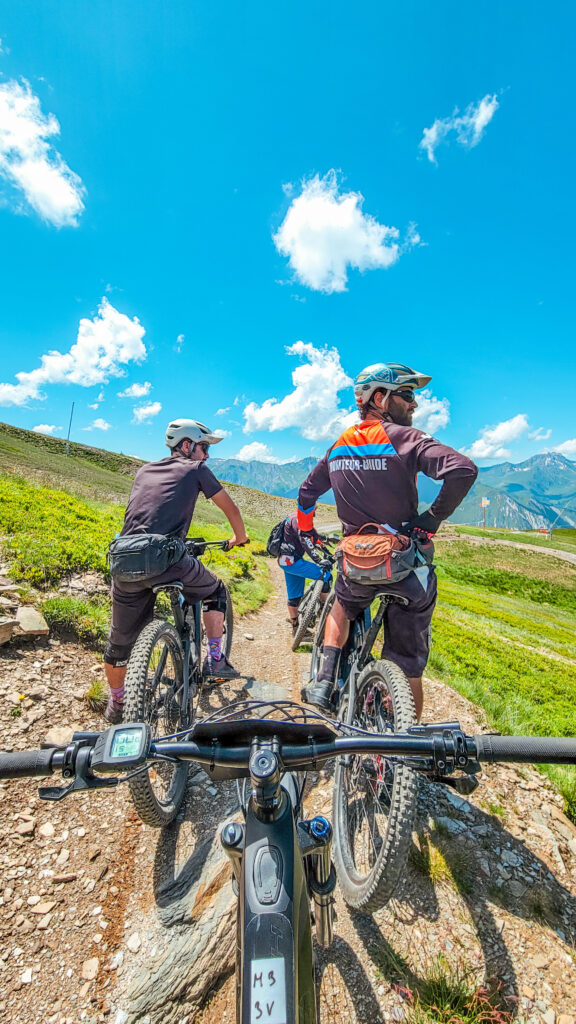The mountain biking outfit:
balancing comfort and safety
Mountain biking is the ideal activity for discovering the trails, and the local fauna and flora. Wearing the right outfit can make the difference between an enjoyable ride and an uncomfortable experience. Here are our recommendations to make the most of your biking adventures.
Helmet: a must-have!
Safety first! A good helmet is essential for protecting your head in case of a fall. Choose one designed for mountain biking as it offers better protection for the back of the head and temples. Always ensure it fits well and is comfortable.

Basic clothing: for comfort
The top
Opt for a long-sleeve jersey. Why? It will protect your arms, especially when riding in wooded areas. In open areas, you can choose a short-sleeve t-shirt (weather permitting). Your biking jersey should ideally be made from breathable, moisture-wicking fabric to keep you dry.
Many biking tops also have back pockets, convenient for carrying small items on your ride!
The bottom
Regardless of length, the best option is padded cycling shorts to reduce friction and provide better cushioning. Comfort guaranteed! You can choose tight-fitting or loose ones, depending on personal preference, but tight ones have the advantage of minimising chafing.
Alternatively, you can go for sports shorts or pants that allow the necessary freedom of movement for mountain biking.


Intermediate layers: adapting to weather conditions
Windbreaker and/or waterproof jacket
In the mountains, weather can change quickly. A lightweight, windproof, and waterproof jacket is essential. It should be compact enough to fit easily in your backpack or a jersey pocket.
Thermal underwear
For cold weather rides, wearing thermal underwear is recommended. The benefits: it’s fitted, breathable, and retains heat. Perfect for enjoying your mountain biking trips.
Accessories: small details that make a big difference
Gloves
Essential for protecting your hands from shocks, vibrations, and falls, they should offer good grip and padded protection in key areas. Long gloves are recommended for better protection.
Protective gear
If you plan to do downhill mountain biking (DH), additional gear like knee and elbow pads are necessary. They provide impact protection while allowing freedom of movement.
Glasses
Glasses are useful in mountain biking to protect your eyes from dust, branches, wind, and UV rays. Photochromic lenses are ideal as they adapt to changing light conditions, which is handy when moving from open areas to dense forests.

Shoes and socks: seeking stability and comfort
Shoes
It’s best to choose shoes specifically designed for mountain biking, with a rigid sole for better power transfer and good grip. High-top models are recommended for better ankle protection.
If you don’t want to invest, hiking shoes will work well since their notched soles provide good pedal grip.
Socks
If possible, socks should be breathable, moisture-wicking, and offer good support. Reinforced models at the heels and toes increase durability and comfort.
Otherwise, you can simply wear your best cotton socks.
Backpack and hydration
A lightweight and functional backpack is essential. You can carry your essentials: tools, food, waterproof jacket, and water.
For experts, backpacks with an integrated water bladder are preferred for easy hydration while riding.

Dressing well for mountain biking is about balancing comfort, safety, and adapting to weather conditions. By following these recommendations, you’ll be ready to tackle the trails with confidence and fully enjoy each ride.
Never forget that preparation is the key to success.
Happy riding!

